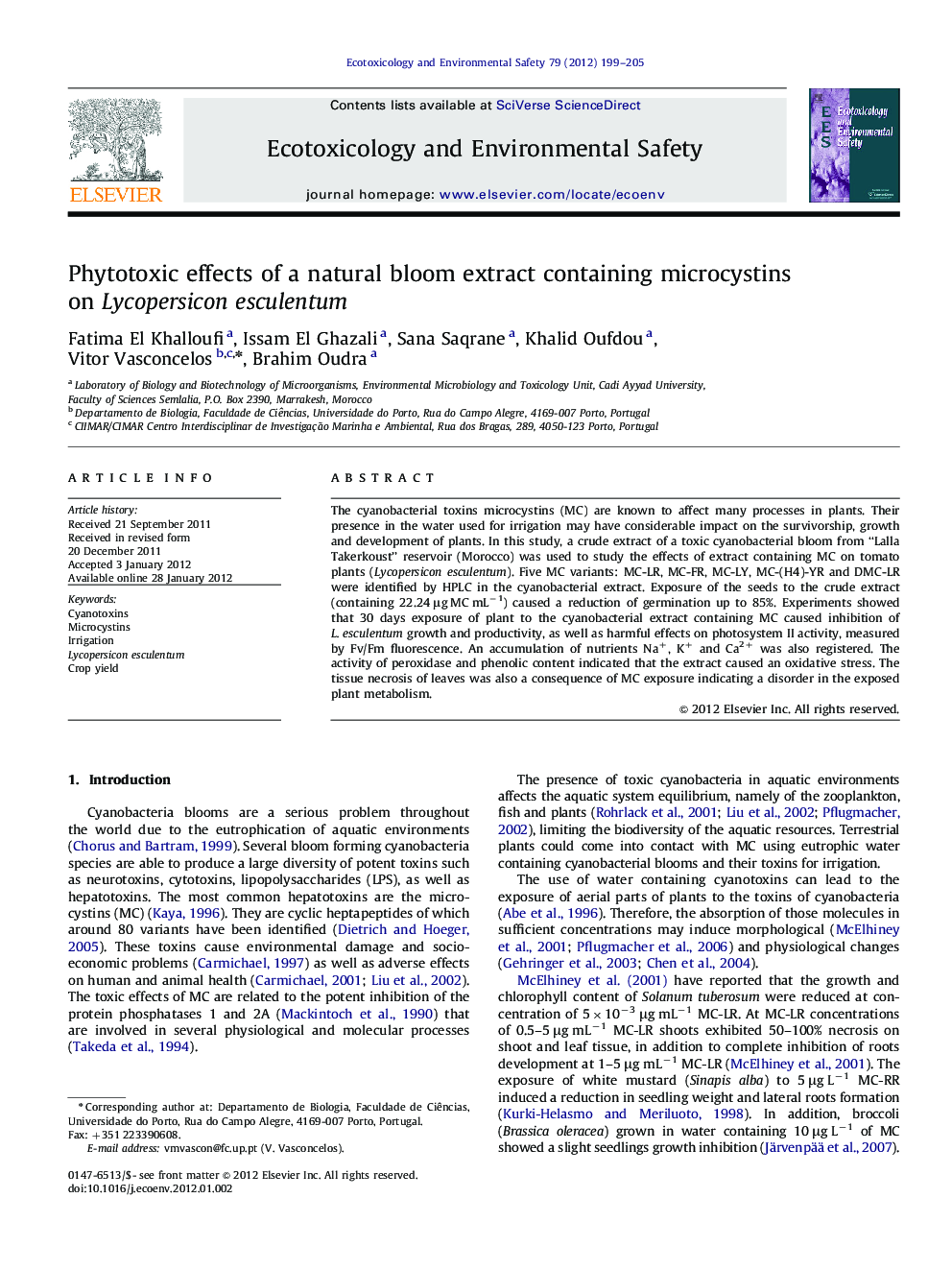| Article ID | Journal | Published Year | Pages | File Type |
|---|---|---|---|---|
| 4420992 | Ecotoxicology and Environmental Safety | 2012 | 7 Pages |
The cyanobacterial toxins microcystins (MC) are known to affect many processes in plants. Their presence in the water used for irrigation may have considerable impact on the survivorship, growth and development of plants. In this study, a crude extract of a toxic cyanobacterial bloom from “Lalla Takerkoust” reservoir (Morocco) was used to study the effects of extract containing MC on tomato plants (Lycopersicon esculentum). Five MC variants: MC-LR, MC-FR, MC-LY, MC-(H4)-YR and DMC-LR were identified by HPLC in the cyanobacterial extract. Exposure of the seeds to the crude extract (containing 22.24 μg MC mL−1) caused a reduction of germination up to 85%. Experiments showed that 30 days exposure of plant to the cyanobacterial extract containing MC caused inhibition of L. esculentum growth and productivity, as well as harmful effects on photosystem II activity, measured by Fv/Fm fluorescence. An accumulation of nutrients Na+, K+ and Ca2+ was also registered. The activity of peroxidase and phenolic content indicated that the extract caused an oxidative stress. The tissue necrosis of leaves was also a consequence of MC exposure indicating a disorder in the exposed plant metabolism.
► Exposure of the seeds of L. esculentum to microcystins caused a reduction of germination up to 85%. ► Exposure to microcystins caused inhibition of L. esculentum growth and productivity. ► Microcystins caused harmful effects on photosystem II activity. ► Activity of peroxidase and phenolic content indicated that microcystins caused oxidative stress. ► Tissue necrosis of leaves was a consequence of exposure of L. esculentum to microcystins.
